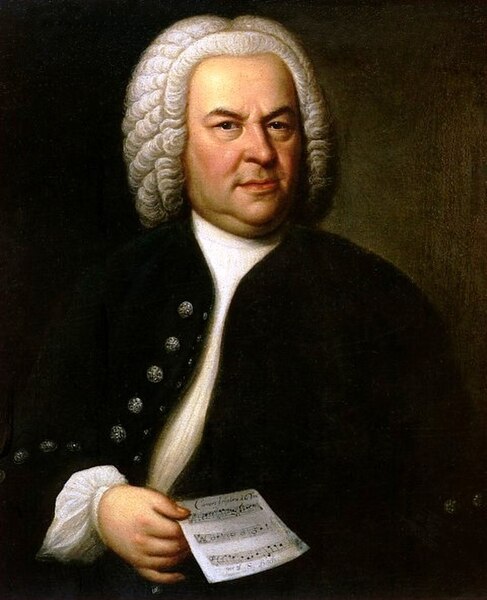Wie schön leuchtet der Morgenstern, BWV 1
Wie schön leuchtet der Morgenstern, BWV 1, is a church cantata for Annunciation by Johann Sebastian Bach. In 1725, when the cantata was composed, the feast of the Annunciation coincided with Palm Sunday. Based on Philipp Nicolai's hymn "Wie schön leuchtet der Morgenstern" (1599), it is one of Bach's chorale cantatas. Bach composed it in his second year as Thomaskantor in Leipzig, where the Marian feast was the only occasion during Lent when music of this kind was permitted. The theme of the hymn suits both the Annunciation and Palm Sunday occasions, in a spirit of longing expectation of an arrival. As usual for Bach's chorale cantata cycle, the hymn was paraphrased by a contemporary poet who retained the hymn's first and last stanzas unchanged, but transformed the themes of the inner stanzas into a sequence of alternating recitatives and arias.
First solo violin part, as used for the first performance of the cantata(copyist: Johann Andreas Kuhnau)
First publication of the hymn in Nicolai's 1599 Frewdenspiegel deß ewigen Lebens
The cantus firmus in the soprano part, as used for the first performance of the cantata(copyist J. A. Kuhnau)
First page of the first volume of the Bach Gesellschaft edition (1851)
Johann Sebastian Bach was a German composer and musician of the late Baroque period. He is known for his prolific authorship of music across a variety of instruments and forms, including; orchestral music such as the Brandenburg Concertos; solo instrumental works such as the cello suites and sonatas and partitas for solo violin; keyboard works such as the Goldberg Variations and The Well-Tempered Clavier; organ works such as the Schubler Chorales and the Toccata and Fugue in D minor; and choral works such as the St Matthew Passion and the Mass in B minor. Since the 19th-century Bach Revival, he has been generally regarded as one of the greatest composers in the history of Western music.
1748 portrait of Bach, showing him holding a copy of the six-part canon BWV 1076.
Johann Ambrosius Bach, 1685, Bach's father. Painting attributed to Johann David Herlicius [de]
The Wender organ Bach played in Arnstadt
Organ of the St. Paul's Church in Leipzig, tested by Bach in 1717






![Johann Ambrosius Bach, 1685, Bach's father. Painting attributed to Johann David Herlicius [de]](https://upload.wikimedia.org/wikipedia/commons/thumb/e/e0/Johann_Ambrosius_Bach.jpg/422px-Johann_Ambrosius_Bach.jpg)

